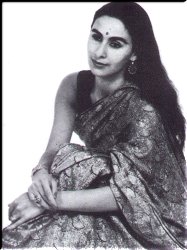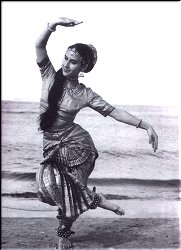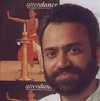 |
  |
 |
  |
LILAVATI HAGER by Ashish Mohan Khokar, Bangalore Photos courtesy: Bengt Hager, atendance, 1998 Jul 2002  She brought the warmth of Indian summers in the cold of Swedish winters. That is because Lilavati left her native Tagore khandaan, no less, for the clear Nordic light. Grand- niece of Abanindranath Tagore, this child of Calcutta was inspired by dance and she gave Indian dance her all. Since her childhood was spent mostly in England, where her father was an eminent lawyer, she was exposed to European culture. Fokine and French Riviera were as much part of her make-up as Kathak and Bharatanatyam. It was the overbearing personality of Krishna Menon under whose influence Lilavati's father had come in England, that Lilavati started thinking of seriously learning Indian art forms. For this she chose Alokananda of the Benaras gharana, the sister of Sitara Devi. Later Ramgopal found her and included her in his troupe. Rest, as they say, is history. With Ramgopal, Lilavati travelled the globe and danced her way into many hearts including that of Europe's most important impressario, Bengt Hager, who was also Ram's manager abroad. Ram's influence on Lilavati and her art was immense and there was no turning back. For good measure, Bengt fell in love with Lilavati and she stayed back in Europe to marry him. In Europe Lilavati worked with Kurt Joos, the guru of Pina Bausch, the current czarina of modern dance in Germany. Kurt Joos gifted Sweden its most important dancer - Birgit Culberg - and when Lilavati married Bengt and made Sweden her home, these connections from the past held strong. But the strongest was her link with India, so she made in Sweden - that little country in the back of beyond - a little India corner. Soon, she and Bengt were inviting artistes from India and the names of Sanjukta Panigrahi, Kumudini Lakhia and Alarmel Valli gained popularity in far away Sweden. For Lilavati, this was the best way of keeping in touch with her land of karmic dance and she created for India an image of lasting beauty in the smiling Swedish landscape.  That image is what she carried to all state and private functions. And functions there were many. Like the king of Sweden honouring Lilavati with the Medal of Karl Gustaf. She wore a blue and yellow sari for the occasion, symbolising the Swedish national colours on Indian attire, her own story. She was an integral part of the huge festival of India in Sweden organised by Arild Berglof of Svenska Institutet in 1987 and she hosted over 200 performing artistes. She wrote books on Indian life and dance and music and crafts and with her husband, created the world's first Dance Museum in Stockholm. That the museum was next to the Prime Minister's official residence on Laboriagatan, showed the importance the Swedish state accorded them. The Palmes ranked amongst their personal friends, committed as the two were to the Social Democratic Party, headed by Olof Palme. Lilavati made India the venue for first UNESCO cultural meet in the region in early seventies and arranged a massive festival where the Balas and the Birjus, the Kumuds and the Kathakali featured. When UNESCO created the Dance Council, no wonder the Hagers were at the helm, with Bengt being its President for over a decade. Lilavati's faith in India, in things Indian, in Indian arts led her to create her own leelas and for this she will always be remembered, even if India hardly remembered her. No award or recognition came her way. In her death on June 5, 2002 in Stockholm, India has lost a noble promoter and Sweden, an eminent citizen. Her legacy is her work and her faith in the great arts of India. 
Ashish Mohan Khokar is a critic, historian and editor, attendance, the Dance Annual of India. e-mail: khokar1960@gmail.com |